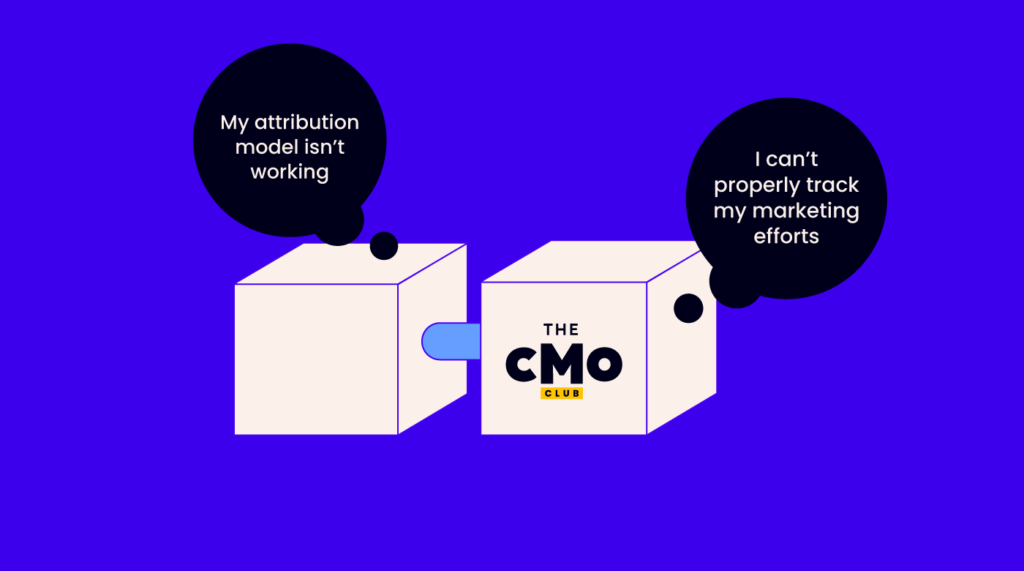As the crisp autumn air settles in and jack-o'-lanterns light up porches across the country, we marketers face a different kind of horror: the specter of attribution that looms over our brand marketing programs.
It's the skeleton in our closet. The vampire sucking the life out of our creative endeavors. The zombie idea that just won't die…
…The notion that brand marketing is mere "arts and crafts" because it's difficult to measure.
But fear not, for we're about to embark on a journey to exorcize these marketing attribution demons and breathe new life into how we value and measure our brand initiatives.
The Graveyard of Single-Touch Attribution
Let's start by digging up the corpse of our current attribution models. Many of us still rely on first or last-touch attribution.
These single-touch models are like using a Ouija board to communicate with your customers—you might get some information, but it's far from the full story.
First-touch attribution gives all the credit to the channel that initially brought a customer to your brand. It's like thanking the person who introduced you to your spouse while completely ignoring the entire courtship that followed.
Last-touch attribution, on the other hand, is akin to giving all the credit to the person who drove you to the wedding venue. Both models fail to account for the modern customer’s complex, multi-touchpoint journey.
Consider this scenario: A potential customer first hears about your product through a podcast ad. They later see a retargeted display ad, which prompts them to read a few of your blog posts. Weeks later, they attend a webinar you're hosting, and finally, they click on a paid search ad to make a purchase.
In a first-touch model, only the podcast ad gets the credit. In a last-touch model, it's the paid search ad. However, we know that each of these touchpoints played a crucial role in the customer's decision-making process.
The reality is that the customer journey is more like a haunted house—full of twists, turns, and unexpected influences. Customers interact with our brands across numerous channels and touchpoints before making a decision. We're leaving valuable insights buried six feet under by clinging to these outdated models.
The Curse of Brand Marketing Measurement
Brand marketing, in particular, suffers under the curse of these simplistic attribution models. Traditional frameworks struggle to track the entire customer journey, especially the ethereal realm where brand equity operates—influencing prospects long before they even reach out to your company.
Brand marketing starts its work when a cue or trigger prompts the customer to think about a particular category.
This ghostly presence is known as a category entry point (CEPs). CEPs are the mental shortcuts that buyers use when considering a purchase. For example, in the B2B software industry, a CEP might be "need to improve team collaboration" or "looking for a more secure cloud storage solution."

In fact, a CEP likely brought you to this very page. The CEP that enticed you may have been “my attribution model isn’t working” or “I can’t properly track my marketing efforts.”
CEPs prompt the customer journey as prospects seek to understand potential solutions for their problems. This leads them on a journey of discovery and mental association building. The more your brand starts marketing in these stages, the more likely you’ll be top of mind when they’re ready for a solution.
But how do we measure brand awareness? Especially something so intangible.
How do we quantify the value of being top-of-mind when customers realize they have a need?
This is where our current attribution models fall short, leaving us feeling like we're trying to catch fog with our bare hands.
The Nightmare of Overlooking Brand Impact
The consequences of undervaluing brand marketing due to attribution challenges can be severe. Here are some of the nightmarish scenarios that can unfold:
- Misallocation of Resources: When we can't properly attribute the impact of brand marketing, we risk underfunding these crucial initiatives. This can weaken brand equity over time, making it harder to compete in crowded marketplaces.
- Short-Term Focus: The inability to measure long-term brand impact can push marketers towards short-term, easily measurable tactics. While these might boost immediate conversions, they can erode brand value and customer loyalty in the long run.
- Incomplete Customer Understanding: By focusing only on the touchpoints we can easily measure, we develop a skewed view of our customers' decision-making processes. This can lead to misguided strategies and missed opportunities.
- Difficulty in Proving ROI: When we can't clearly demonstrate the value of our brand marketing strategy, securing budget and buy-in from stakeholders becomes challenging. This can create a vicious cycle where brand initiatives are consistently underfunded and undervalued. This also means we’re likely undervaluing the overall contribution and ROI from marketing efforts as a whole.
Breaking the Spell: A New Approach to Attribution
It's time to break free from the chains of outdated attribution models and embrace a more holistic view of the customer journey. Here's how we can start to lift the curse:
- Embrace full-funnel thinking: Recognize that every touchpoint, from the first whisper of brand awareness to the final conversion, plays a role in the customer's decision. Implement multi-touch attribution models that give credit where it's due. This might involve using marketing attribution tools to track customer interactions across various channels and assign weighted values to each touchpoint.
- Incorporate brand health metrics: Don't just focus on hard conversions. Track metrics like brand awareness, sentiment, and share of voice. These are the vital signs of your brand's health and can provide early indicators of future success. Regular brand tracking surveys can help you monitor these metrics over time.
- Leverage advanced analytics: Use AI and machine learning to uncover hidden patterns in your data. These tools can help you see the invisible threads connecting your brand efforts to tangible outcomes. For instance, you might discover that customers who engage with your brand content are 30% more likely to convert within six months, even if they don't click directly through to a purchase.
- Conduct incremental lift studies: Compare the performance of audiences exposed to your brand marketing versus control groups. This can help isolate the impact of your brand initiatives. For example, you might run a geo-split test, heavily investing in brand marketing in certain regions while maintaining your usual mix in others, and then compare the long-term performance differences.
- Blend quantitative and qualitative data: Numbers tell part of the story, but don't forget the power of customer interviews and surveys. Sometimes, simply asking customers about their journey can reveal insights that no algorithm could uncover. You might discover that a seemingly inconsequential brand touchpoint played a crucial role in building trust and influencing purchase decisions.
Bringing Your Attribution to Life
As marketing leaders, it's up to us to champion this new approach to attribution. Here are some actionable steps you can take:
- Audit your current attribution model: Identify where it's falling short and where brand touchpoints are being overlooked. Map out your entire customer journey and highlight the gaps in your current measurement approach.
- Invest in tools that allow for more comprehensive data collection and analysis: The right technology can be the difference between seeing the complete picture and just a fragment. Look for brand management solutions that integrate data from multiple sources and provide a unified view of the customer journey.
- Develop a custom attribution model that includes brand metrics: One size doesn't fit all – your attribution should be as unique as your brand. This might involve creating a weighted model that assigns value to both direct response metrics and brand health indicators.
- Foster collaboration between your brand and performance marketing teams: Break down the silos and encourage a unified view of the customer journey. Regular cross-team meetings and shared KPIs help align efforts and create a more cohesive marketing strategy.
- Educate your stakeholders on the long-term value of brand marketing: Help them see beyond the immediate conversion and understand the compounding effects of strong brand equity. Present case studies from your industry demonstrating the long-term ROI of brand investments.
- Experiment with new measurement techniques: Don't be afraid to try novel approaches. For instance, you might use attention metrics to gauge the quality of engagement with your brand content or employ neuroscience techniques to measure emotional responses to your brand messaging.
- Create a brand value scorecard: Develop a comprehensive dashboard that combines all your brand metrics – from awareness and consideration to loyalty and advocacy. Use this to track your brand's health over time and correlate it with business outcomes.
The Dawn of a New Era In Brand Measurement
By taking these steps, we can shine a light on the true value of our brand marketing efforts. We can move from the murky shadows of incomplete data into the clear light of comprehensive understanding.
Remember, effective brand measurement is not about finding a silver bullet solution. It's about creating a holistic brand fundamentals framework that captures the multifaceted impact of your brand efforts. This might involve combining traditional brand tracking studies with digital engagement metrics, customer lifetime value calculations, and even predictive analytics that forecast the long-term impact of your brand investments.
As you implement these new approaches, be patient. Brand building is a long-term game, and it may take time to see the full impact of your efforts reflected in your new measurement framework. But with persistence and a commitment to continuous improvement, you can paint a much clearer picture of your brand's value.
As we approach the witching hour of our fiscal year, let's not be spooked by the challenges of attribution. Instead, let's treat ourselves to a new perspective on measuring brand impact. After all, the only thing we have to fear is an unchanged attribution model.
And remember, much like the spirits that haunt our favorite Halloween tales, the impact of strong brand marketing lingers long after the campaign has ended. By embracing these new approaches to attribution, we can ensure that our brand efforts don't disappear into the night but continue to work their magic, driving business results for years to come.
Join For More Brand Marketing Insights
Ready for more brand marketing insights? Start by reading our guide on the importance of brand management. And make sure to join The CMO newsletter to get our latest tips, resources, and guides sent straight to your inbox.



